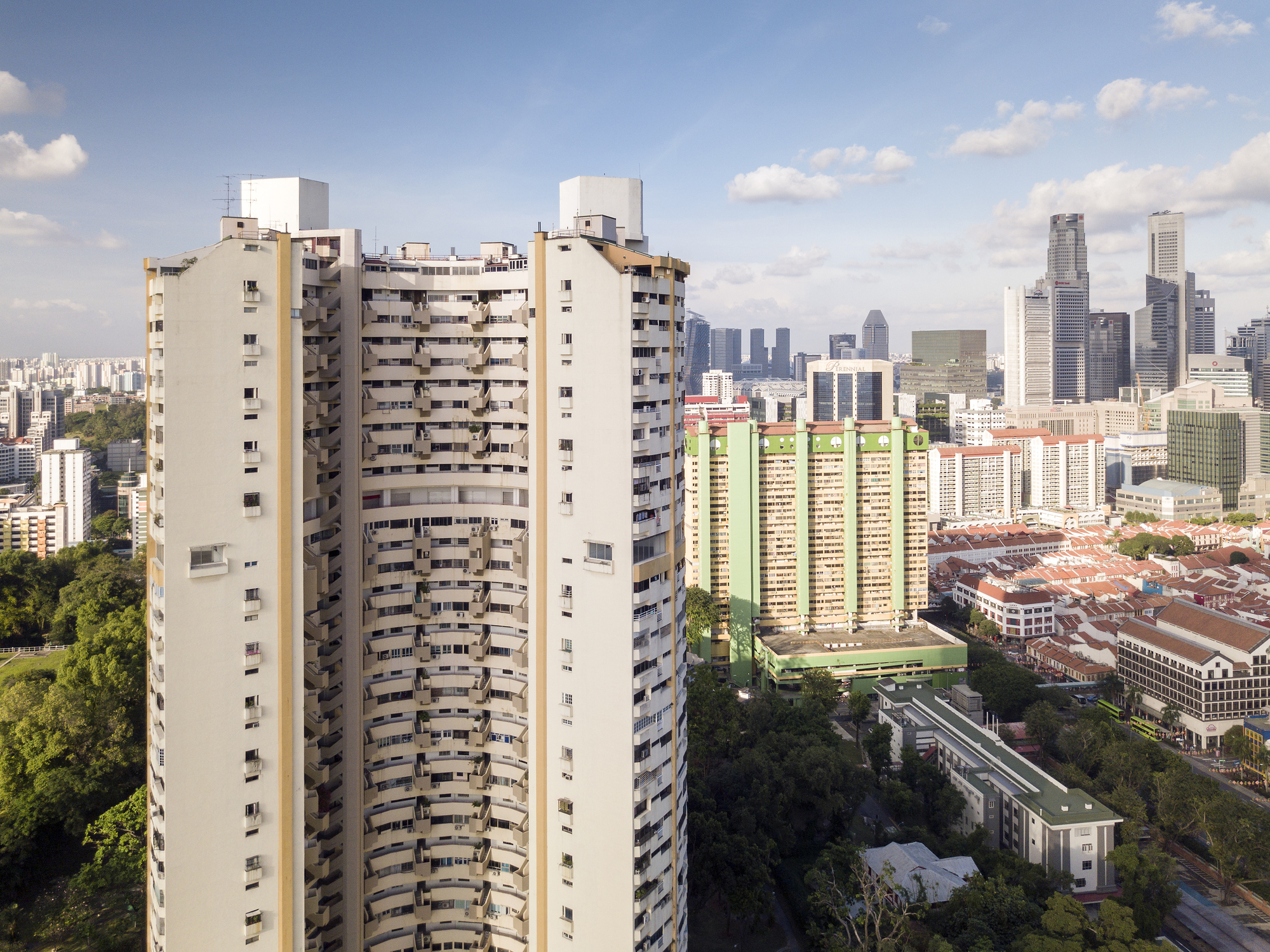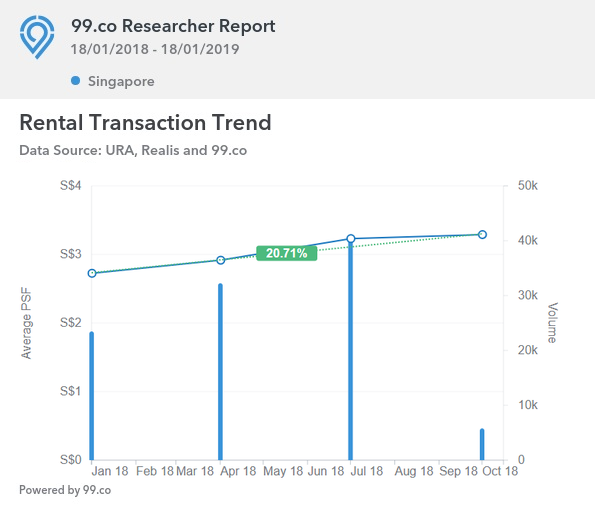With a loft unit at Punggol Sapphire sold for $910,888, will we see a $1 million flat in Punggol soon?
As a waterfront town, Punggol offers residents waterfront housing and picturesque landscapes
A fortnight ago, a 149 sq m (1,604 sq ft), five-room, loft unit in Punggol Sapphire was sold for $910,888. It was a new high for an HDB flat in the suburban public housing estate in the northeast region.
The seller, Singaporean Mr Ang, says he had purchased the unit jointly with his wife when the Punggol Sapphire was launched in a Build-to-Order (BTO) exercise in 2008. Located at the junction of Punggol Way and Punggol Field, Punggol Sapphire has a total of 1,065 flats of which 1,000 are four- and five-room units, with another 23 loft units ranging from 1,001 sq ft to 1,604 sq ft.
The units were oversubscribed by three times, with 3,073 bids at the close of the BTO exercise in 2008. However, Ang and his wife succeeded in purchasing their loft unit for $452,000 then.
Like all owners of HDB flats purchased under the BTO scheme, Ang and his wife are only allowed to sell their unit after the five-year minimum occupation period (MOP), which in his case, was last May.
The 1,604 sq ft loft unit at Punggol Sapphire was sold at a record price of $910,888 on Jan 18 (Credit: Albert Chua/ The Edge Singapore)
When the couple held an open house on Jan 12, their home attracted 11 interested parties. The very next day, a buyer signed the option to purchase the loft unit for $910,888, which is even higher than the original asking price of $800,000. The deal was brokered by Singapore Realtors Inc (SRI).
“We were just trying our luck,” says Ang, a 45-year-old project manager, in a phone interview with EdgeProp Singapore. “We were not planning to stay in the unit for the long term. By letting go of the unit early in the lease, we should be able to get a better price for it, so we can upgrade.” The flat has 93 years left on its 99-year lease.
The $1 million threshold
Apart from the 23 loft units at Punggol Sapphire, there are another 14 five-room loft units at TreeLodge@Punggol, an HDB estate located at the junction of Punggol Drive and Punggol Road.
According to Tony Koe, managing director of SRI, there are only 37 such loft units in HDB estates in the Punggol area. The scarcity factor explains the record price. “Out of the 37 loft units, this is the ninth unit that has been sold,” notes Koe. “The supply of these loft units is getting limited. That means there are only 28 who are still holding on to their units.”
Koe says he would not be surprised if there was another transaction in Punggol that “hit the high $900,000 mark”. However, the $1 million price threshold “may be a challenge”, he adds. “That would mean the HDB flats in the Central area, the likes of Pinnacle @ Duxton, achieving resale prices in the $1.3 million to $1.4 million range.”
A five-room flat on level 20 at Punggol Bayview overlooks Punggol Reservoir and enjoys an unblocked view of Sumang Estate (Credit: Albert Chua/The Edge Singapore)
So far, there have been 160 HDB resales at prices above $1 million, according to SRI data. The latest resale of a million-dollar flat was for a five-room flat at City View @ Boon Keng that fetched $1.185 million earlier this month. The flat was one of those built under the Design, Build and Sell Scheme (DBSS) that was scrapped in 2011.
Executive condo to cross $1,000 psf
However, SRI’s Koe is expecting the upcoming 820-unit executive condo (EC) at Sumang Walk in Punggol to cross the $1,000 psf mark, thereby setting a new price benchmark for this segment of hybrid public-private housing. He points to the 628-unit Rivercove Residences, an EC at Anchorvale Lane in Sengkang that was launched last April. The project is fully sold, and the average price achieved is $975 psf. However, about 145 units (23%) were sold at prices of $1,000 psf or higher, according to caveats lodged to date.
According to Koe, there’s generally a $300 psf price gap between private condos and ECs in the same neighbourhood. “With new suburban, 99-year leasehold condos launched at prices in the $1,400 psf range, it’s not surprising if EC prices hit the $1,100 psf mark,” he reckons. What’s more, the project will be the only EC development launched this year.
SRI’s Koe expects the upcoming 820-unit executive condo at Sumang Walk to cross the $1,000 psf mark (Credit: Albert Chua/ The Edge Singapore)
‘Silicon Valley’ of Singapore
While Punggol may not be as developed as the mature HDB estates in the likes of Queenstown, Toa Payoh or Bishan, 27-year old IT security analyst Jyzryl Escanilla Barroa says he is looking forward to “the Silicon Valley” that will be coming up in Punggol North.
The “Silicon Valley” that Barroa is referring to is the upcoming Punggol Digital District (PDD), which will house key growth sectors such as cyber security, digital technology and other technologies that will drive Singapore’s Smart Nation push. The PDD will be the first mixed-use district with commercial and business park spaces. It will also include Singapore Institute of Technology’s new campus, fostering collaboration between industries and the academia. The PDD is scheduled to open in 2023, and will be part of the North Coast Innovation Corridor, aimed at tech firms.
Punggol Digital District will be the first district in Singapore to adopt an integrated masterplan approach when it opens in 2023 (Credit: Albert Chua/The Edge Singapore)
Punggol is positioned as “Singapore’s first waterfront town”. Prime Minister Lee Hsien Loong unveiled plans for “Punggol 21 Plus” during his 2007 National Day Rally Speech, and selected Punggol as one of the pilot towns under the Remaking Our Heartland (ROH) programme.
Waterfront lifestyle
A new 4.2km long man-made waterway was built through the town, connecting the Sungei Serangoon and Sungei Punggol reservoirs. This has created more opportunities for waterfront living and water-based activities.
The waterway runs through Punggol Waterway Park, which is one of four parks linked by the North Eastern Riverine Loop of the Park Connector Network (PCN). Along the waterfront are a wide variety of F&B options. Tucked away in Punggol East at Tebing Lane, a cluster of cargo container bistros with alfresco seating provides diners with views of the reservoir. Coney Island, an offshore island that was previously inaccessible without a boat, is now connected to Punggol End and offers picturesque views of the sea.
The 6.1 km water-themed park connector joins Punggol Waterway and passes through Singapore’s largest man-made wetland, Sengkang Floating Wetland (Credit: Albert Chua/ The Edge Singapore)
The lifestyle amenities in Punggol have attracted residents like IT executive Barroa, who moved to the town with his family last year. He bought a five-room flat at Punggol Bayview and paid $470,000 for the unit that offers an unblocked view of the Punggol waterfront. “We really like the waterfront view here,” he says. “We spend a lot of time at home and it feels like a staycation. If we get bored at home, we will go to the rooftop garden of our block to relax.”
Located beside Punggol Promenade Nature Walk, the 50 ha Coney Island Park is home to a rich biodiversity (Credit: Albert Chua/ The Edge Singapore)
Apart from the view, Barroa likes the fact that there is a Sparkle Tots Preschool at the neighbouring block. Punggol Cove Primary School is also within walking distance. “We have applied for a spot for our daughter at Sparkle Tots,” he says. “She is currently in the first year of kindergarten at a preschool near Meridien LRT station. We are planning for her to attend Punggol Cove Primary School in future.”
Tucked away in Punggol East at Tebing Lane is a cluster of cargo containers bistros with alfresco seating, overlooking the Punggol-Serangoon Reservoir (Credit: Albert Chua/ The Edge Singapore)
Connectivity
Singaporean Kelvin Cheng also moved into his new Punggol flat just last year. The sales and marketing manager in his mid-30s moved from Bukit Panjang, as he prefers the tranquillity that Punggol offers compared with mature estates.
Cheng also likes the connectivity, as it takes him just 30 minutes to drive from Punggol to CBD, Orchard Road or Choa Chu Kang. This is because of a new road that opened last November, connecting Punggol Central to the Kallang-Paya Lebar Expressway (KPE) and Tampines Expressway (TPE) and Pan Island Expressway (PIE). “Traffic is a lot smoother now,” he says.
The Lorong Halus Bridge connects Punggol Waterway and Lorong Halus Wetland, where nature enthusiasts and bird watchers frequent (Credit: Albert Chua/ The Edge Singapore)
To further ease traffic congestion, there will be a bridge running across Sungei Serangoon, new flyovers across TPE and KPE as well as the existing access points of Punggol Town. This is expected to be completed sometime in 2021.
Even though Cheng is staying just beside the expressway, “it is not noisy at all”, he says. “It’s unlike in Bendemeer, where a four-room BTO flat is commanding about $500,000 and yet it is noisy.” Cheng purchased his four-room BTO flat at Sumang Walk for $308,000. In the future, he intends to upgrade to a “five-room flat in Punggol”, with the additional bedroom to cater to a growing family, he adds.
Meanwhile, Barroa is looking forward to the completion of the Punggol PDD, which is expected to create 28,000 new jobs. Barroa is looking forward to his firm’s impending opening of a new office in the PDD. This will reduce his commuting time to work. “If I work here [at the PDD], I can take the bus, walk or cycle to work,” he says.
By Amy Tan / EdgeProp | January 26, 2019 7:00 AM SGT
Source: EdgeProp











